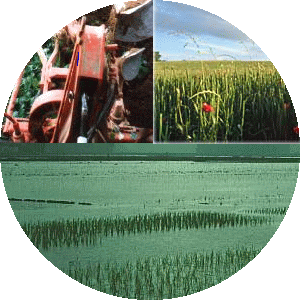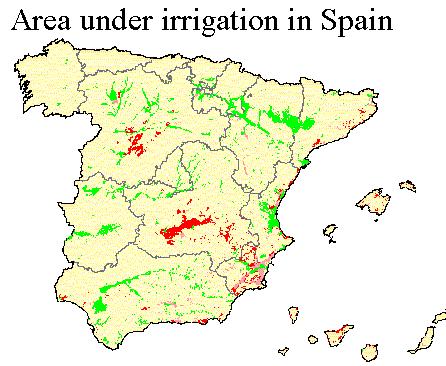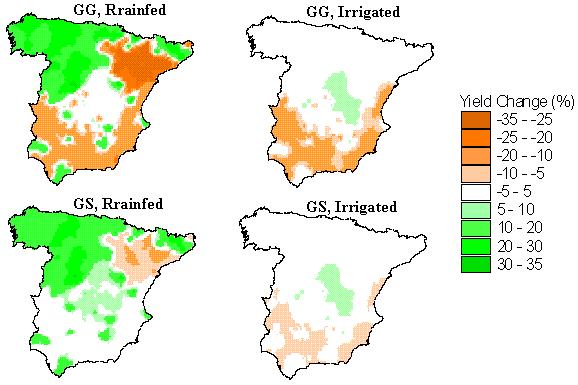 > English > Climate Encyclopaedia > Food and Climate > more > 2. Predicting the future > - case study, Spain
> English > Climate Encyclopaedia > Food and Climate > more > 2. Predicting the future > - case study, Spain
|
|
Case studies in developed countriesSpainAgriculture in Spain is both the main use of the land in terms of area (over 50% of total land area) and the principal water-consuming sector of the economy (over 60% of total water consumption).
|
|
Problem: Spain is undergoing rapid changes in the structure of its agricultural sector and increased demands on land and water resources have exacerbated pressures on the environment. Projecting the impact of climate change on national agriculture should help to prepare the sector for the future. The aim of this case study is to examine the regional competitive advantage of dry land agricultural production in Spain in order to project future land use. Methods: Crop models integrated with Decision Support Systems are be used to evaluate crop productivity and test the relative economic advantages of different agricultural management options.
|
Scenarios: Climate change scenarios for 2050 were developed using the U.K. Hadley Centre Global Circulation Model (GCM) . In the GCM, simulations of future climate are conducted where greenhouse gas forcing is gradually increased over time (1% increase per year increase, compounded, in equivalent CO2).
|
|
|
The scenario which just consideres predicted rises in greenhouse gases is designated GG. A second simulation which includes the effects of greenhouse gases and sulphate aerosols is designated GS. Sulphate aerosols tend to reflect and scatter solar radiation back into space and thus introduce a cooling factor into the GCM simulations. Results: Despite the uncertainties associated with the use of GCM's it is clear that, even in the best case scenario (GS), agricultural production is likely to decline in the central regions of Spain which are currently the most productive regions of the country. Considering the current high production costs and the variability in the water available for irrigation, crop growth may have to be abandoned in some areas, particularly these central regions, unless major changes in crop management are implemented.
|
1. scientific reviewer: Alex de Sherbinin - CIESIN, Columbia University, USA 2. scientific reviewer: Lily Parshall - Goddard Institute for Space Studies, Columbia University, USA educational reviewer: Emilio Sternfeld - Colegio Virgen de Mirasierra - España last published: 2004-05-12 |


